Bronze age dig in Whittlesey uncovers very rare 3,000 year glimpse into the past
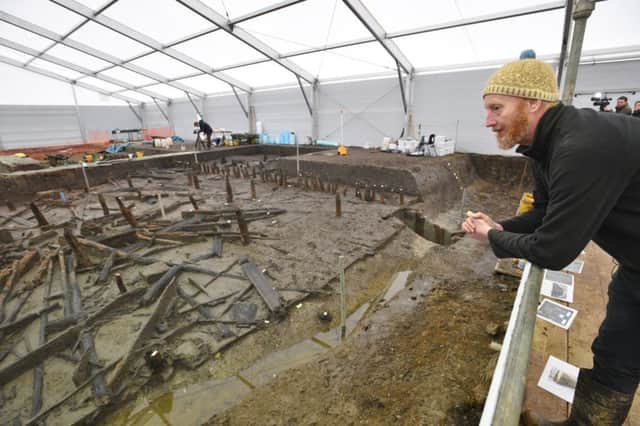

Two Bronze Age round houses, dating back to around 1290 BC were discovered in Must Farm Quarry, off Funthams Lane.
The 3,000 year old houses, which were built on stilts were destroyed by a fire and collapsed into a river - which preserved the bowls, tools and even timber in clay.
Advertisement
Hide AdAdvertisement
Hide AdNow archaeologists have been able to learn more about how our ancestors lived.
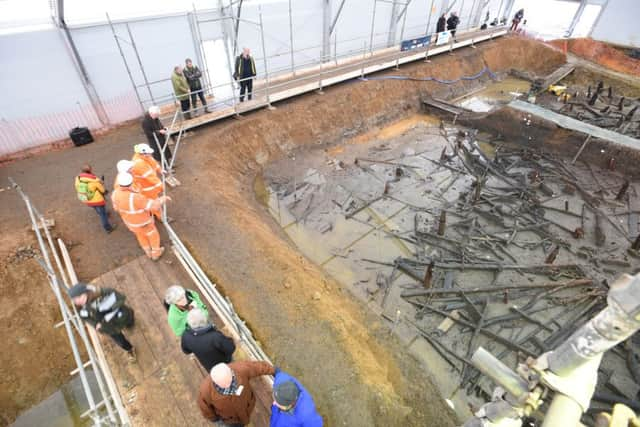

A £1.1 million project to excavate the site, funded by government heritage agency Historic England, and quarry-owners Forterra, has been launched.
Mark Knight, site director of the excavation, said: “We are, effectively, for the first time in British history about to go inside a Bronze Age roundhouse.
“We’re going to go inside a Bronze Age home, we’re going to see what’s in there, what they were wearing, what they were eating on the day of the fire.
Advertisement
Hide AdAdvertisement
Hide Ad“We’ll understand what the world they lived in looked like, what it smelt like. It’s a world we’ve dreamed about getting into. Here we have it in that space.”
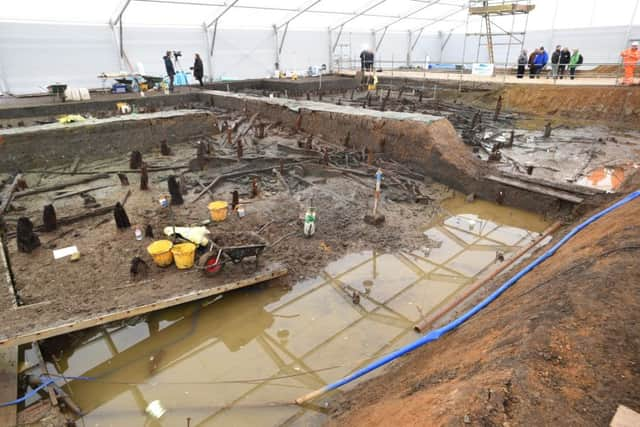

A human skull has also been found, but Mr Knight said further excavation was needed to discover if there were more remains and whether the person had died in the fire, or was the skull of an enemy or an ancestor being displayed.
Chris Wakefield, outreach worker for Cambridge Archaeology Unit said: “There has been a remarkable amount of items preserved.
“We have found 29 complete vessels. One of them was found containing food and even the spoon still inside. We will be examining the food to find out exactly what was in it.
Advertisement
Hide AdAdvertisement
Hide Ad“Because of the way it was abandoned with everything still on site, it is a bit like Pompeii.
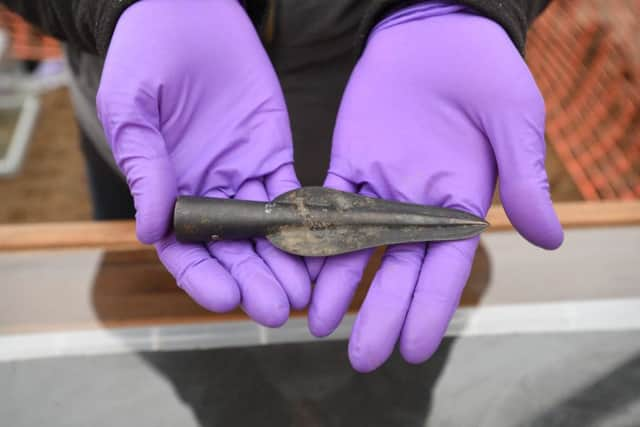

“We found a variety of things, from everyday post to fine ware, such as a poppy headed cup, which dates back to around 920BC. These were mainly found on the continent, not in Europe.
“We also found they ate sheep and cattle, rather than fish found in near-by rivers.
“We have a number of specialists working on the site, including geo-archaeologists, a fire specialist and people who are able to use new chemical techniques to examine the artefacts. We learn things that we would never be able to do 40 or 50 years ago.”
Advertisement
Hide AdAdvertisement
Hide AdWhile the cause of the dramatic fire which destroyed the two houses is unknown, the timber left in the clay remains has been able to tell the archaeologists a lot about how the residents lived - from the size of the houses to even what degree of pitch the roof was fitted (32 degrees).
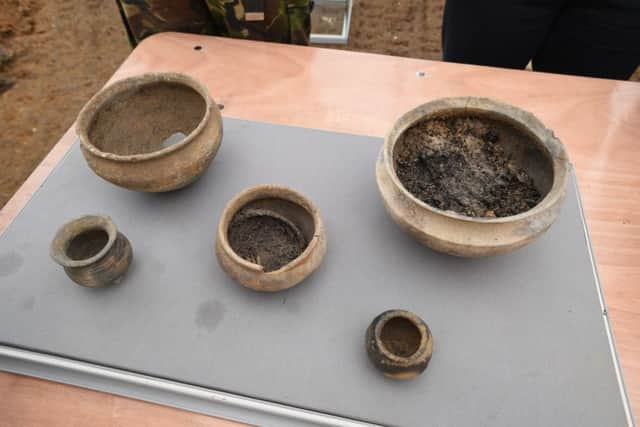

Grahame Appleby, senior research officer said: “The site was discovered in 1999 when someone spotted the posts sticking out of the clay.
“There were a couple of exploration digs in 2006, and then we started this bigger dig in August last year. It is due to finish in April.
“We have found bronze tools and weapons, which give us a snapshot of what life was like. We have also found textiles, and we can even tell what garments they were for. Normally with textiles you are lucky if you find pieces the size of a fingernail.
Advertisement
Hide AdAdvertisement
Hide Ad“In a British context this sort of site is very rare. It is the variety of material that we have found here that makes it so special.”
David Gibson, archaeological project manager said he thought it was probable a number of other houses had been built in the area, but had been destroyed by the quarrying process.
It is hoped that when the dig is complete, the finds will be put on display in Peterborough museum, and other exhibitions around the area.
For more details visit www.mustfarm.com